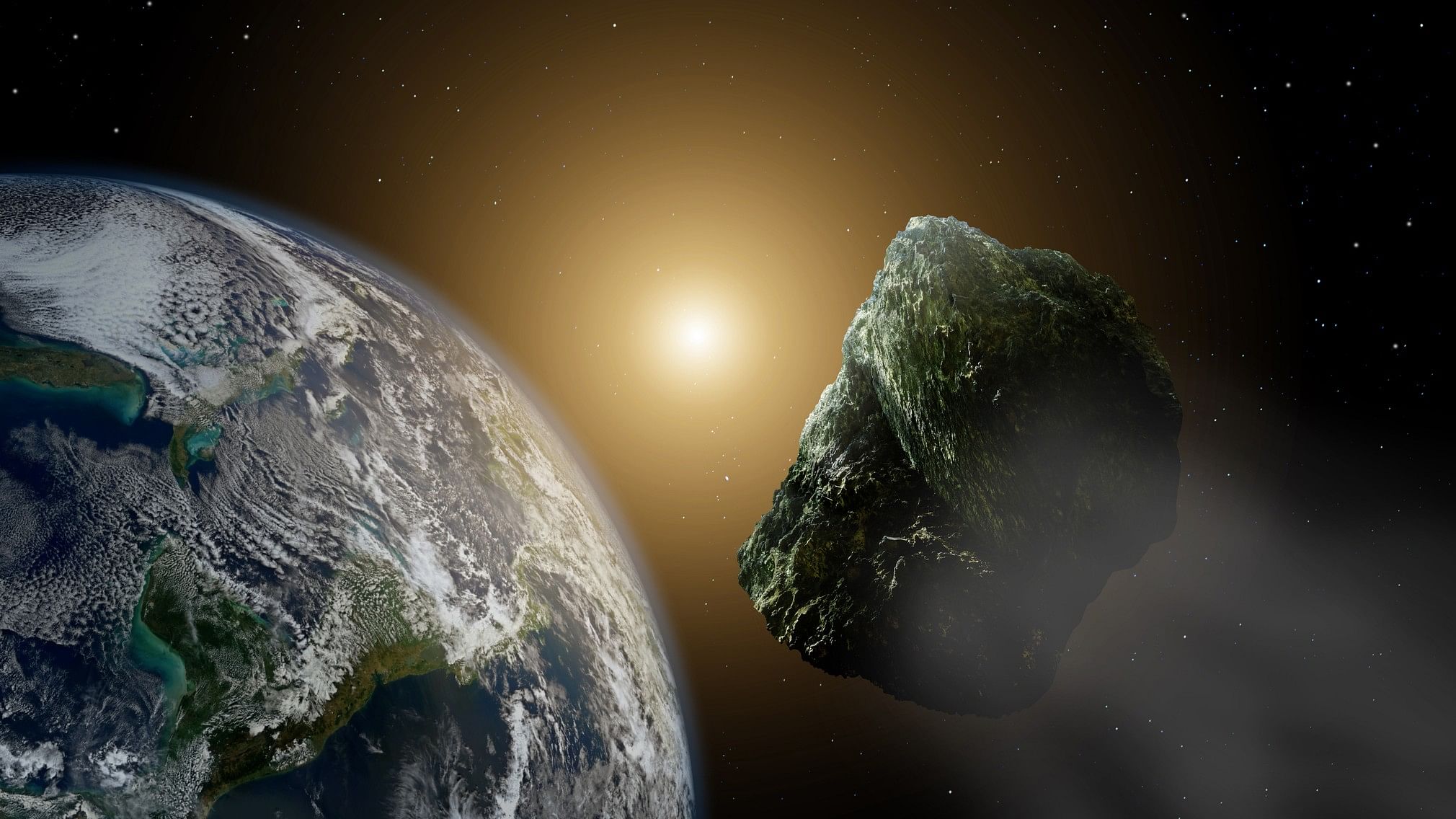
Representative illustration showing an asteroid and planet Earth.
Credit: iStock Photo
A massive asteroid, roughly the size of the Washington Monument in DC, is set to make a close approach to Earth next week.
According to a report by Science Times, the asteroid, named 2024 MK, is currently the constellation of Centaurus, some six million kilometres from Earth.
Although that is a gargantuan distance, the asteroid is estimated to be travelling at a speed of 33,732 kmph, and is expected to make its closest approach to Earth in 10 years by next week.
When it makes its approach, 2024 MK will reportedly fly past Earth at a distance of 296,119 km—closer than the Moon is to Earth (the average distance between our planet and Luna is 384,633 km).
Currently visible below the horizon from Greenwich, UK, using long-exposure photography, the 2024 MK's fly-by next week can first be observed in the southern hemisphere, before it makes its closest approach to Earth.
When it makes its closest approach to Earth, however, the asteroid will be visible in the northern hemisphere as well, reports Science Times.
Is there a risk of impact?
No. As per NASA, there is no chance of 2024 MK hitting Earth during this flyby.
However, when the asteroid approaches Earth again in the year 2116, there is reportedly a 0.00000095 chance of a direct impact.
How risky are asteroid impacts?
There are innumerable asteroids both in the solar system and beyond, but they are not considered potentially hazardous unless they come within 7.4 million km of Earth and measure at least 460 feet in diameter.
Asteroids of the aforementioned size can destroy entire cities and give rise to cataclysmic events at a regional level.
As asteroid measuring around 650 feet, meanwhile, can take out an entire small country.
If an asteroid measuring around a kilometre hits Earth, however, the impact could cause mass extinction and devastation at a global level.